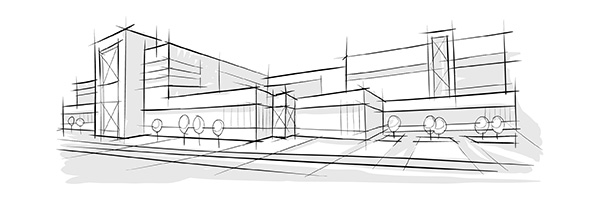Thankfully, architects can fill this gap by teaming up with Space Planning Consultants. This collaboration sparks creative storage ideas, improving buildings and keeping clients happy.
Finding the Right Balance
Architects have to blend their creative ideas with what clients actually need. Naida Mirza, Principal and Vice President at ASD|SKY, a multidisciplinary design firm, talks about how important it is to customize solutions for each project.

Mirza points out that while a tech company might go for bold designs, a traditional bank might prefer something more classic. No matter what, having a strong relationship with clients is crucial for successful collaboration and understanding.

Learning About Storage
Architect Jeremy Davis, from APG | Architects, remembers how his education didn't really cover practical storage solutions. "Architecture school is more about theory," Davis says. "Storage wasn't even on the radar."
But in the real world, storage is a big deal. In healthcare projects, Davis often finds that clients need more storage than they initially thought. "Clients always want more storage as projects move forward," he says.

Davis notes that while storage is hugely important, it’s typically low on the priority list. “In my case, I’m focused on designing exam spaces, physician workspaces, and more operationally driven spaces. Storage is obviously hugely important to clients and an important component of operations, but it’s often secondary to other concerns.”
This gap in education shows why architects need to understand the practical side of storage. By working with Space Planning Consultants, architects can better meet storage needs and create functional designs.
Practical Experience and Collaboration
Both Mirza and Davis agree that working with space experts is key to good storage planning.
"My Space Planning Consultant," Gene Reilley, has been a huge help," Mirza says. "He helps me find solutions I wouldn't have thought of, like high-density shelving systems. Gene helped me understand the importance of floor loading. Little tips and the education we can provide clients about storage matters are huge."

Davis shares this view, highlighting the importance of storage experts as partners. "It's important for us to be able to offer solutions, and that's what my partners do," he explains. "Instead of just going with wire shelving, I depend on their expertise. The right solution makes the most of the space, showing how important collaboration is."
Why Space Planning Matters
Even if storage isn't a top priority at first, it becomes more important as projects develop. Good space planning means understanding what clients need, teaching them about storage options, and working with a space planning consultant to find the best solutions. This approach ensures storage spaces are both practical and flexible.
By mixing creativity with client needs and building strong partnerships, architects can provide smart, innovative storage solutions tailored to each project. To find out how our space planning consultants can help with your project, contact a representative at Patterson Pope today.













